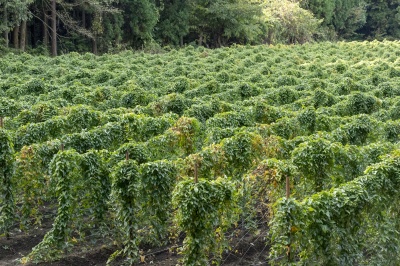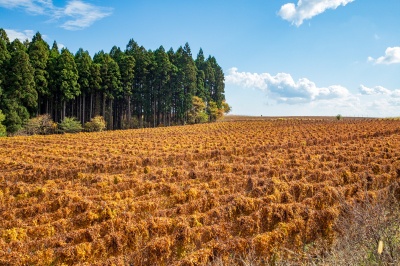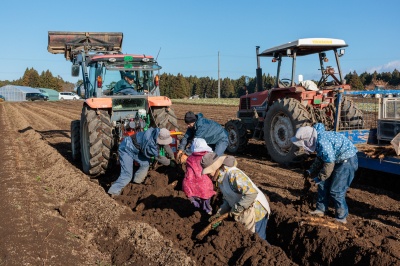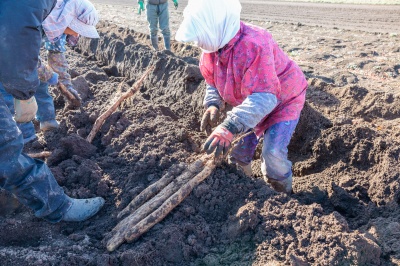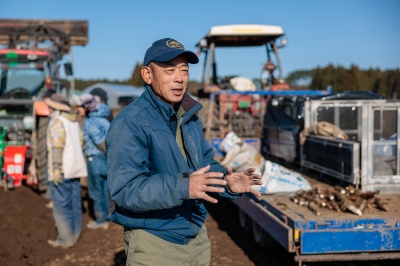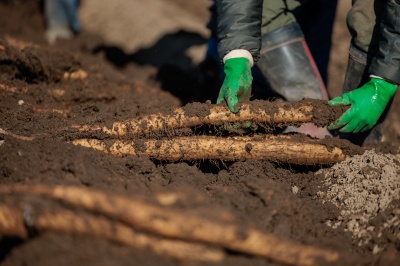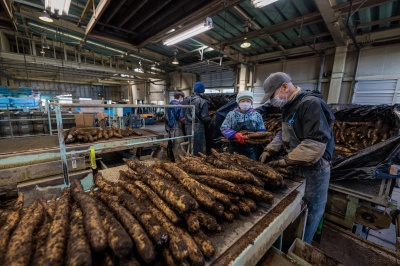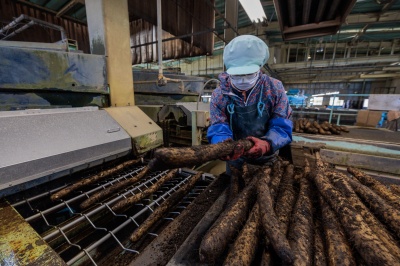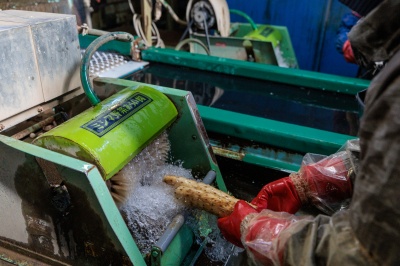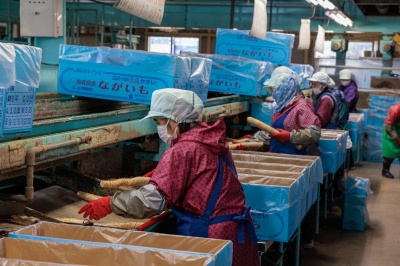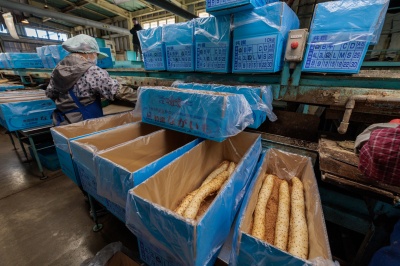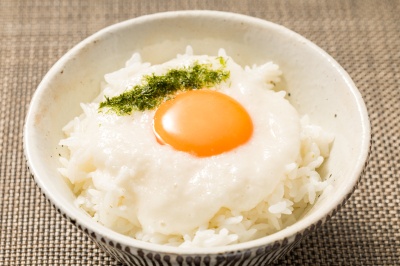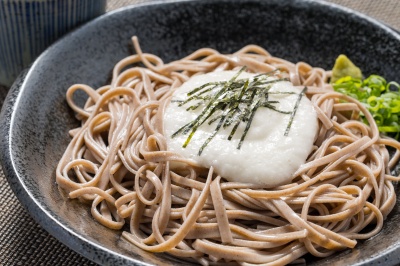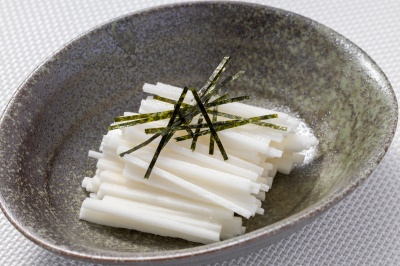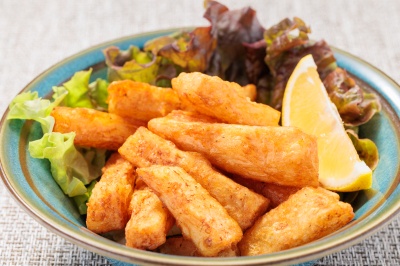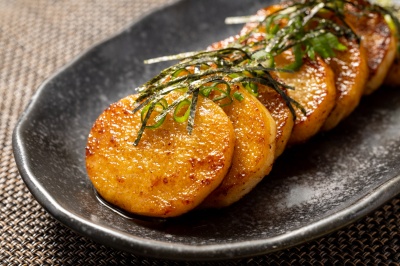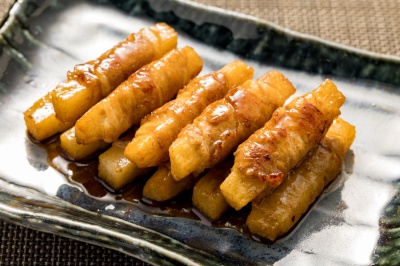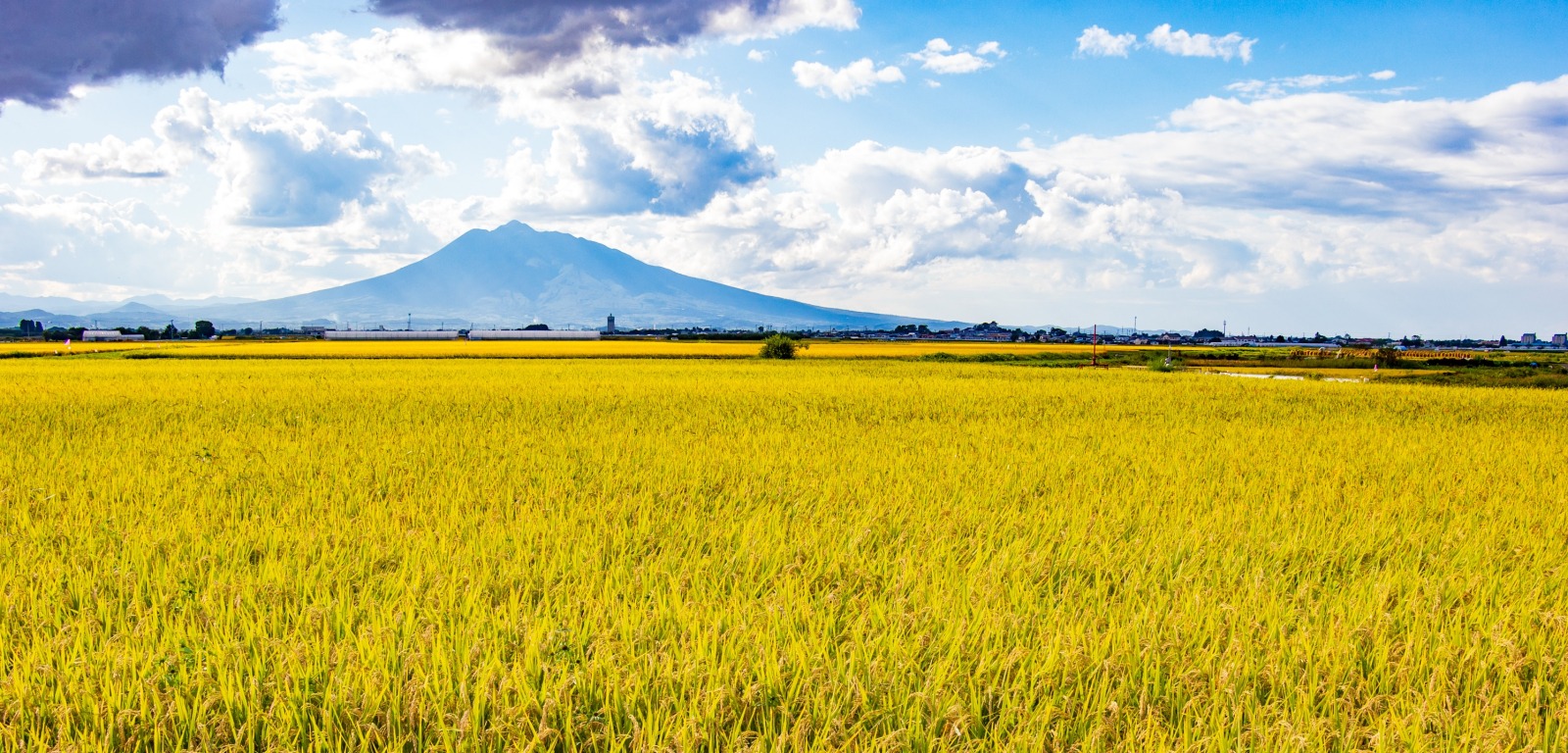High-quality Aomori nagaimo (Chinese yams) grown in a cool climate and healthy soil
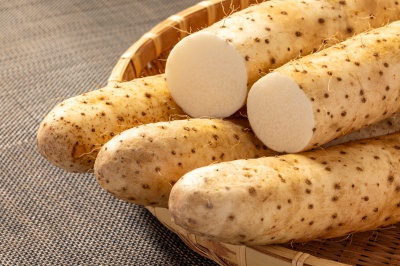
Nagaimo grown in Aomori Prefecture boast one of the largest shipment volumes in Japan, accounting for about 40% of the total amount distributed throughout the country. Aomori’s nagaimo are highly regarded for their excellent quality, as they are very sticky without a bitter taste. In addition to being sold in Japan, they are exported to the United States, Taiwan, and other locations abroad, where they are enjoyed by consumers.
Here is an introduction of the appeals of high-quality nagaimo grown in Aomori Prefecture.
Interview with a nagaimo farmer! The process of harvesting delicious nagaimo
In early December, harvesting work reached its peak in the nagaimo fields of Yoshinobu Orikasa, a nagaimo farmer in Misawa City, Aomori Prefecture.
Orikasa explains, “Aomori is characterized by its cool climate with a wide range of temperatures due to the cold easterly summer winds blowing from the Pacific Ocean. For this reason, many root vegetables are grown in the prefecture, and the nagaimo have a particularly fine texture and wonderful flavor.” Based on his many years of experience, Orikasa grows high-quality nagaimo according to the changing climate and conditions each year.
Nagaimo seed potatoes are planted in the fields in May. In the summer, the nagaimo plants grow lush leaves, creating green curtains of nagaimo plants over the fields. When the green curtains wither and turn brown around November, it is time to harvest the nagaimo.
During harvesting, heavy machinery is used to dig a ditch about one meter deep in the fields, and then the nagaimo are dug up by hand from both sides of the trench. The trenches are dug carefully and meticulously to avoid breaking the nagaimo.
Orikasa says, “Because nagaimo grow in the soil, it is difficult to manage the soil environment, pest control, and timing of fertilizer application.” He hopes that many people of all ages will enjoy the nagaimo he has diligently cultivated.
Delivering delicious nagaimo year round with outstanding storage technology
Nagaimo produced in Aomori Prefecture are harvested twice a year: from November to December (fall harvest) and from March to April (spring harvest) after winter ends.
The flavor of nagaimo varies depending on the harvest season. Nagaimo dug up in autumn are refreshing and juicy, while nagaimo dug up in spring are moderately moist and have a more concentrated sweetness and strong stickiness. Nagaimo from Aomori are also useful for processed products such as Japanese and Western sweets.
After harvesting, nagaimo are stored in containers in a storage facility. The temperature in the storage facility is thoroughly controlled to ensure that the nagaimo remain fresh for a long time. The nagaimo are kept in storage until just before shipment, when they are washed, sorted, and packed in boxes.
The nagaimo are placed on a high-pressure washing machine, and water pressure is used to remove soil. If there are any areas where the soil remains, they are carefully cleaned one by one.
Nagaimo are sorted by aspects such as size and grade and packed in boxes. Sawdust is placed in the boxes together with the nagaimo. The sawdust serves as a cushioning material to prevent damage to the nagaimo and to keep the inside of the box at a moderate humidity level without exposing the nagaimo to air.
Boxed nagaimo are shipped all over Japan and overseas throughout the year.
The nutritional value of nagaimo
Nagaimo are known as the “eel of the mountains” and have long been eaten in Japan as a nourishing food.
They contain high levels of the digestive enzyme amylase, which aids in the digestion of foods eaten together with the nagaimo. They also contain various functional ingredients such as dioscorin A, which is a protein that helps deter influenza, as well as vitamin B1 and lectins, which are proteins that inhibit the growth of harmful bacteria.
Nagaimo allow you to enjoy a variety of textures depending on how they are cooked
Nagaimo are rare among potato and yam varieties in that they can be eaten raw. Besides being enjoyed raw, they can be cooked in a variety of ways, including simmered, baked, steamed, boiled, and deep-fried. You can also enjoy their different textures such as crispy, flaky, sticky, and fluffy.
If you want to enjoy the texture of nagaimo when eaten raw, we recommend slicing them into strips, serving them in salads, or pickling them. If you grate them and add them over rice or soba noodles, you can savor the natural stickiness and flavor of nagaimo.
If you want to heat up nagaimo for deep frying or stir-frying, it is fine to wash them thoroughly and cook them with the skin on. Nagaimo have a mild taste without an unpleasant flavor, so they go well with any seasoning and can be combined with a wide range of foods.
When you want to store whole nagaimo, you should wrap them in newspaper and then store them in a cool, well-ventilated place. Cut nagaimo should be wrapped so that the cut edges are not exposed to air and kept refrigerated.
Nagaimo are a highly nutritious vegetable that can be eaten in a wide variety of ways. How about trying to incorporate them into your daily meals?

